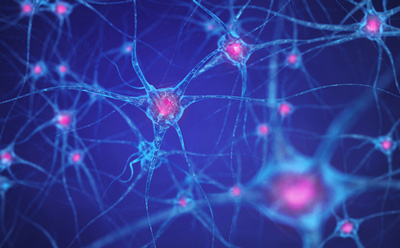Cocktail of mutant proteins linked to Huntington’s disease
Posted: 20 November 2015 | Victoria White
Researchers have shown that the gene that causes Huntington’s diseases makes an unexpected “cocktail” of mutant proteins that build up in regions of the brain that are most affected by the disease…


Researchers have made a new discovery about Huntington’s disease, showing that the gene that causes the fatal disorder makes an unexpected “cocktail” of mutant proteins that accumulate in the brain.
The findings are significant because these newly identified mutant proteins kill neurons and build up in regions of the brain that are most affected by the disease, said Laura Ranum, Ph.D., director of the University of Florida (UF) Centre for NeuroGenetics and a professor in the UF College of Medicine department of molecular genetics and microbiology.
Huntington’s disease is an inherited disorder that damages nerve cells and causes parts of the brain to deteriorate, leading to uncontrolled movements and behavioural and cognitive problems.
The researchers examined the brains of 12 deceased adult and juvenile patients with Huntington’s disease. They found novel proteins that were abundant in areas of patients’ brains that showed cell death, neuronal loss and other signs of disease, including neuroinflammation.
Along with a protein already implicated in Huntington’s disease, the researchers found four proteins that also contribute to the disease pathology. The disease stems from a genetic mutation in the Huntingtin gene that produces too many copies of a DNA segment known as CAG, which gives rise to a longer Huntingtin protein with toxic effects. However, researchers found that this DNA repeat mutation can undergo a process known as repeat associated non-ATG (RAN) translation, producing four additional damaging repeat proteins that accumulate in the brain. This was a surprise to the researchers because these RAN proteins are made without a signal in the genetic code that was previously thought to be required for protein production. Each of the four RAN proteins contains long repeats of certain single protein building blocks, or amino acids.
“These repeat proteins are too long for cells to deal with and they build up as aggregated clusters that kill cells,” Ranum said.
Finding these novel RAN proteins in degenerated areas of the brain that were negative for the previously known mutant Huntington protein was crucial to linking them to the disease, said Monica Bañez-Coronel, Ph.D., a postdoctoral associate.
Knowing that four proteins may underlie the disease also presents its own challenge.
“We now know that there are more players in the disease arena and it is likely that each one of these proteins contribute to Huntington’s disease,” Bañez-Coronel said.
Discovery could eventually lead to new therapies for Huntington’s disease
In addition to finding that the RAN proteins accumulate in the striatum, a specific brain region predominantly affected in Huntington’s disease, researchers also found them in the frontal cortex, cerebellum and white matter regions of the brain. Bañez-Coronel said this was the first time the accumulated proteins related to Huntington’s disease were extensively found in white matter, an inner part of the brain containing cells that support neuronal function.
The discovery of RAN proteins in the cerebellum suggests that they may be responsible for some of the typical uncontrolled movements observed in Huntington’s disease patients, researchers said.
On the basis of their findings, the researchers believe there is a possibility that RAN proteins contribute to eight other similar neurodegenerative disorders, including spinobulbar muscular atrophy and several types of spinocerebellar ataxia, which are also caused by an abnormal increase in the number of CAG repeats.
Knowing that rogue proteins are implicated in Huntington’s disease is just the first step. Ranum said further research is needed. In addition to the possibility of new therapies, detecting these proteins may be useful for predicting the disease’s onset, its progression and treatment responses, researchers said.
Related conditions
Huntington's disease



